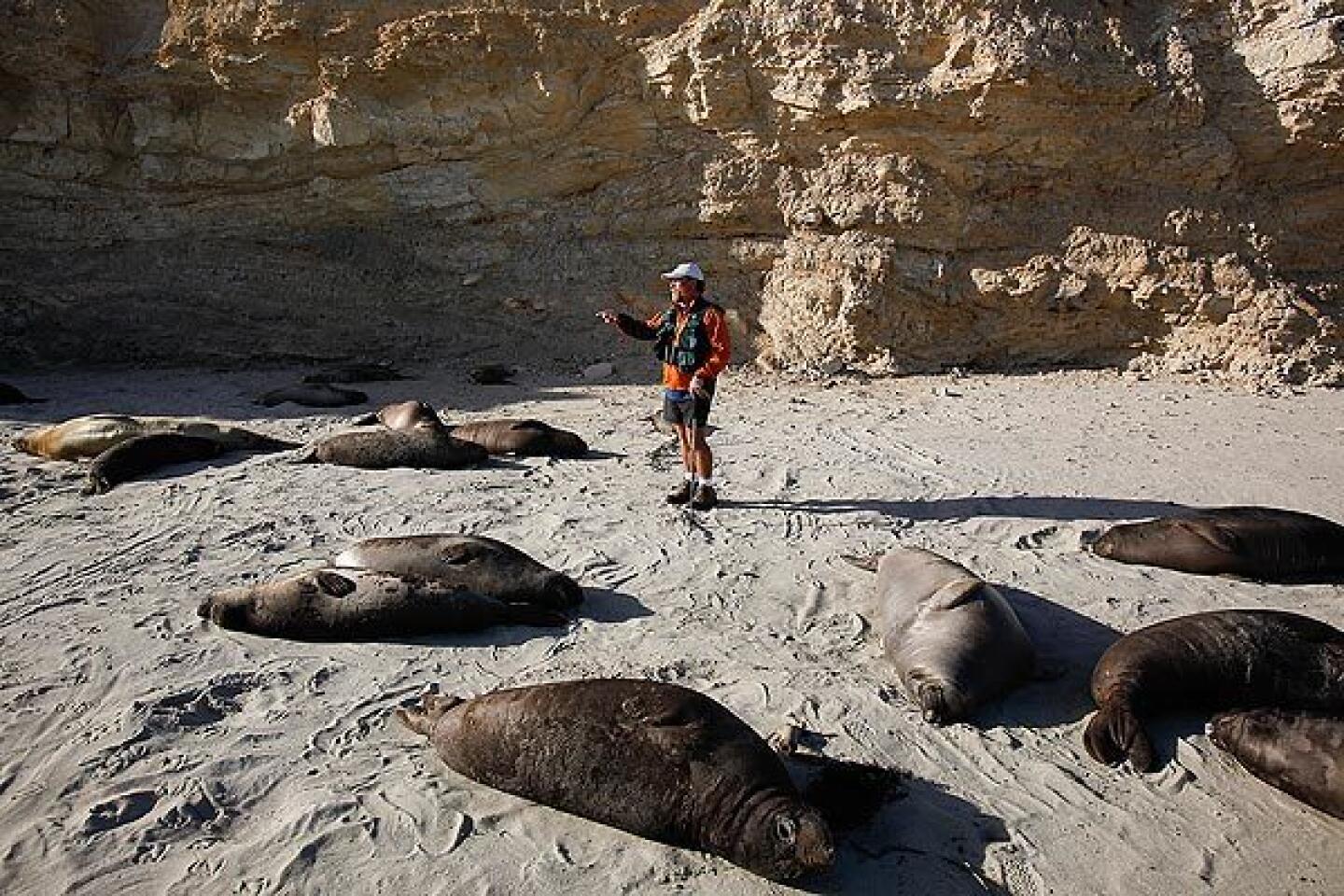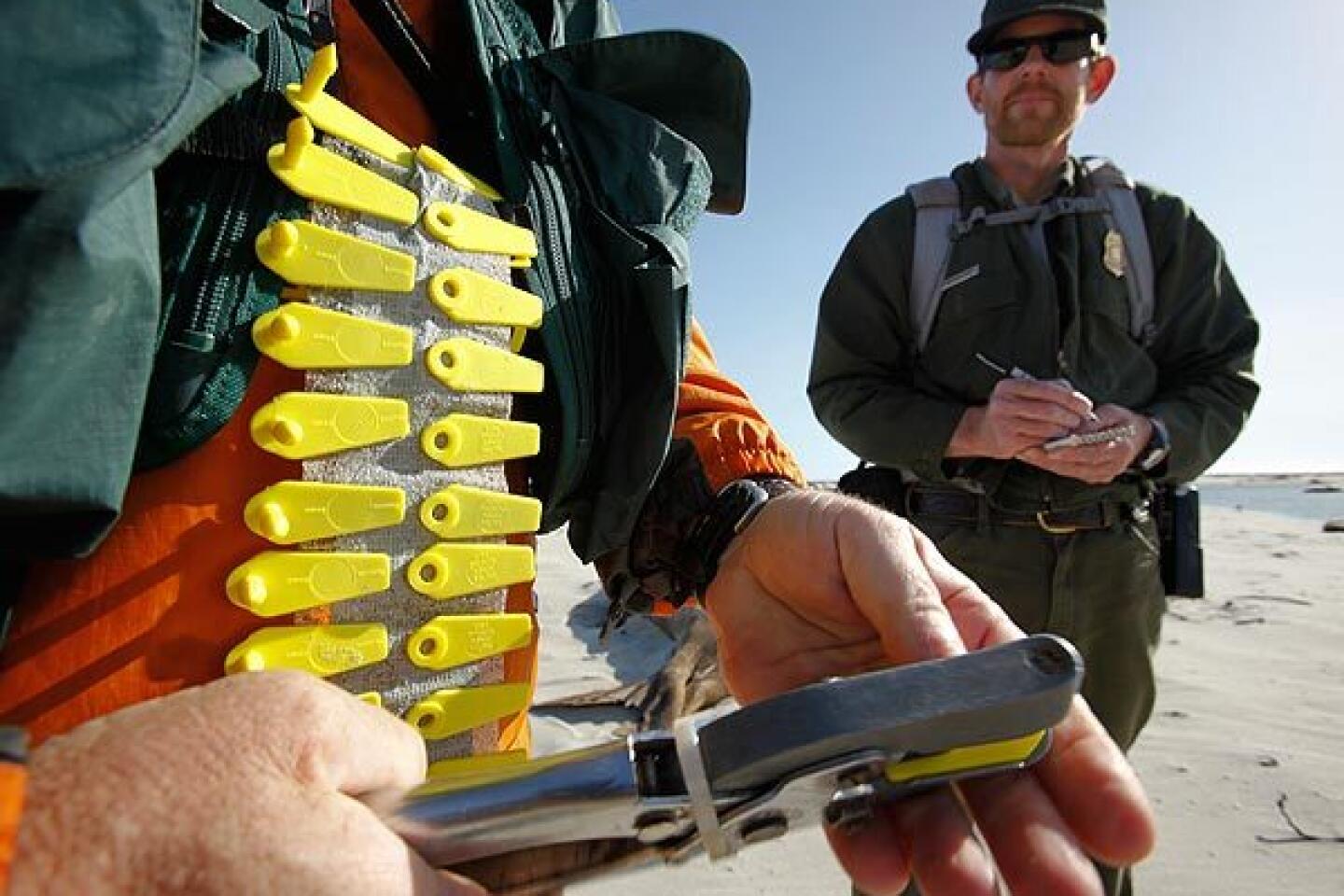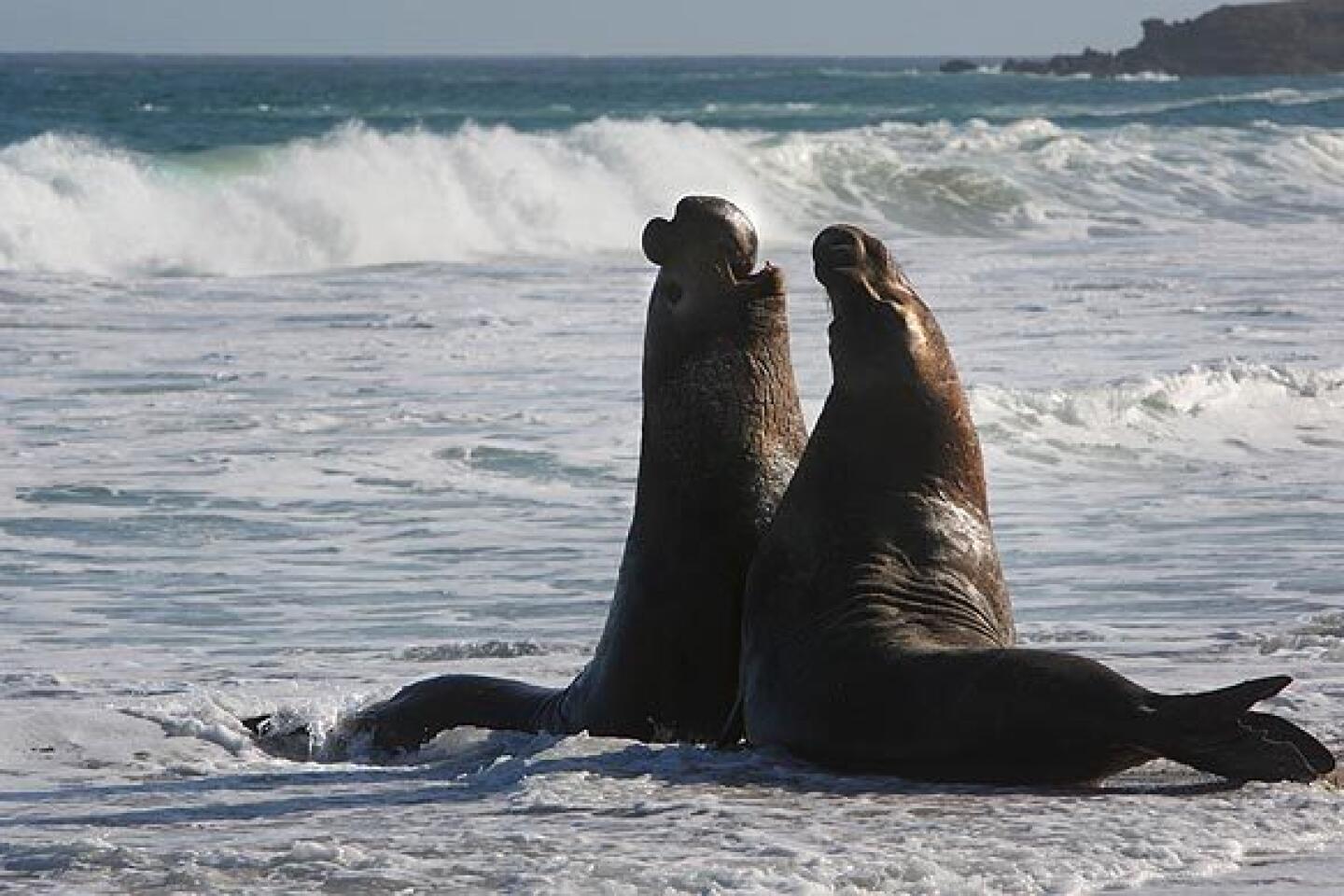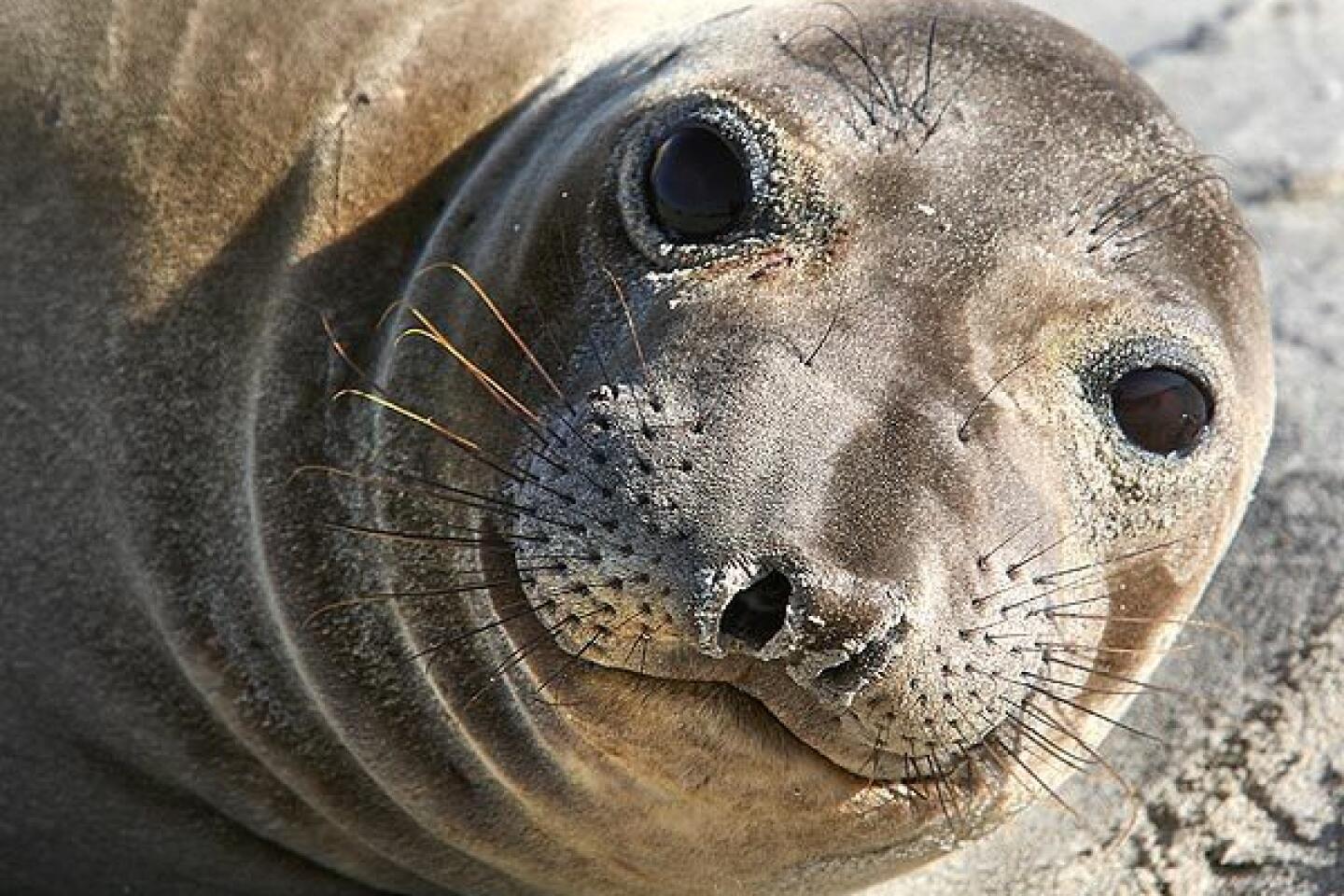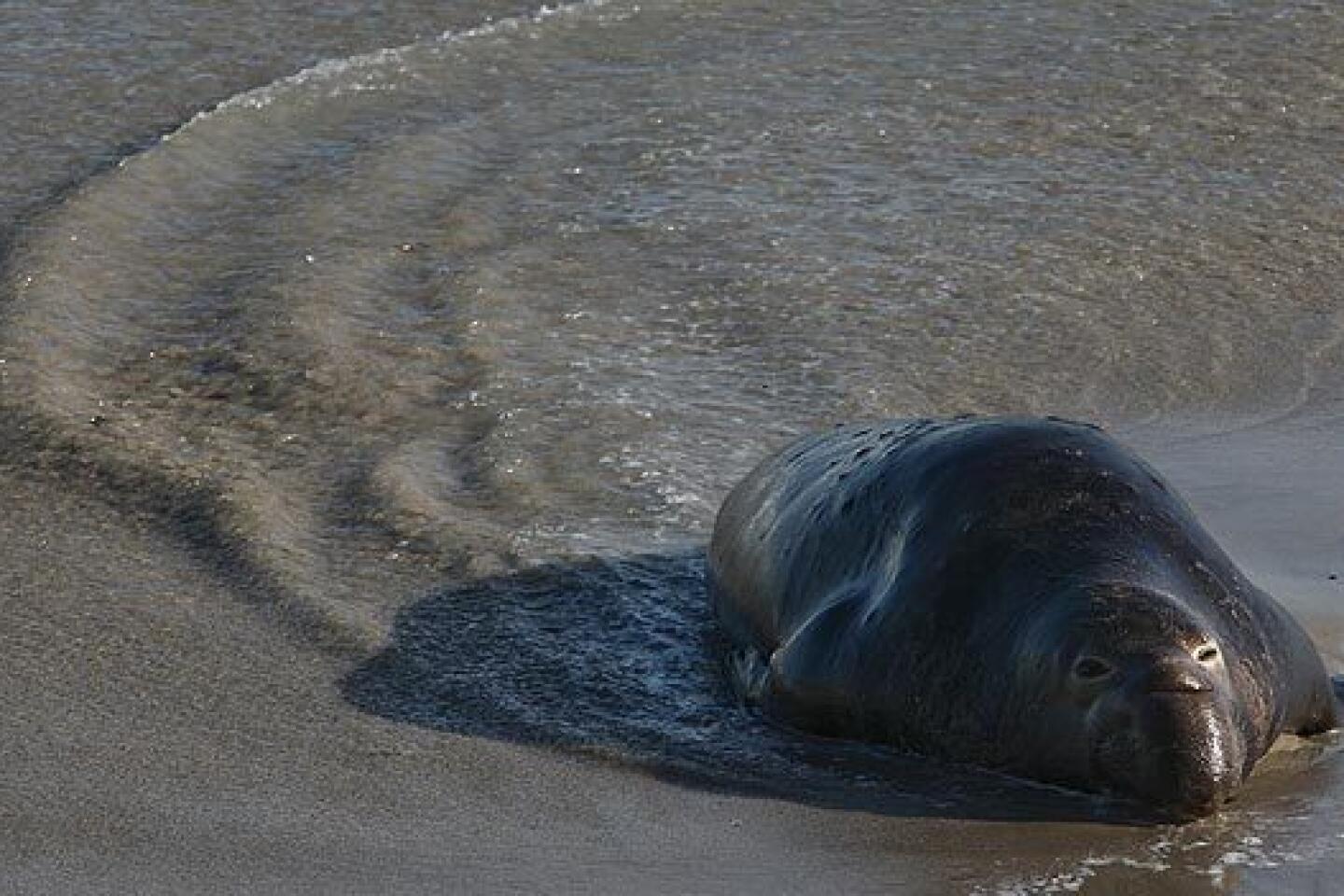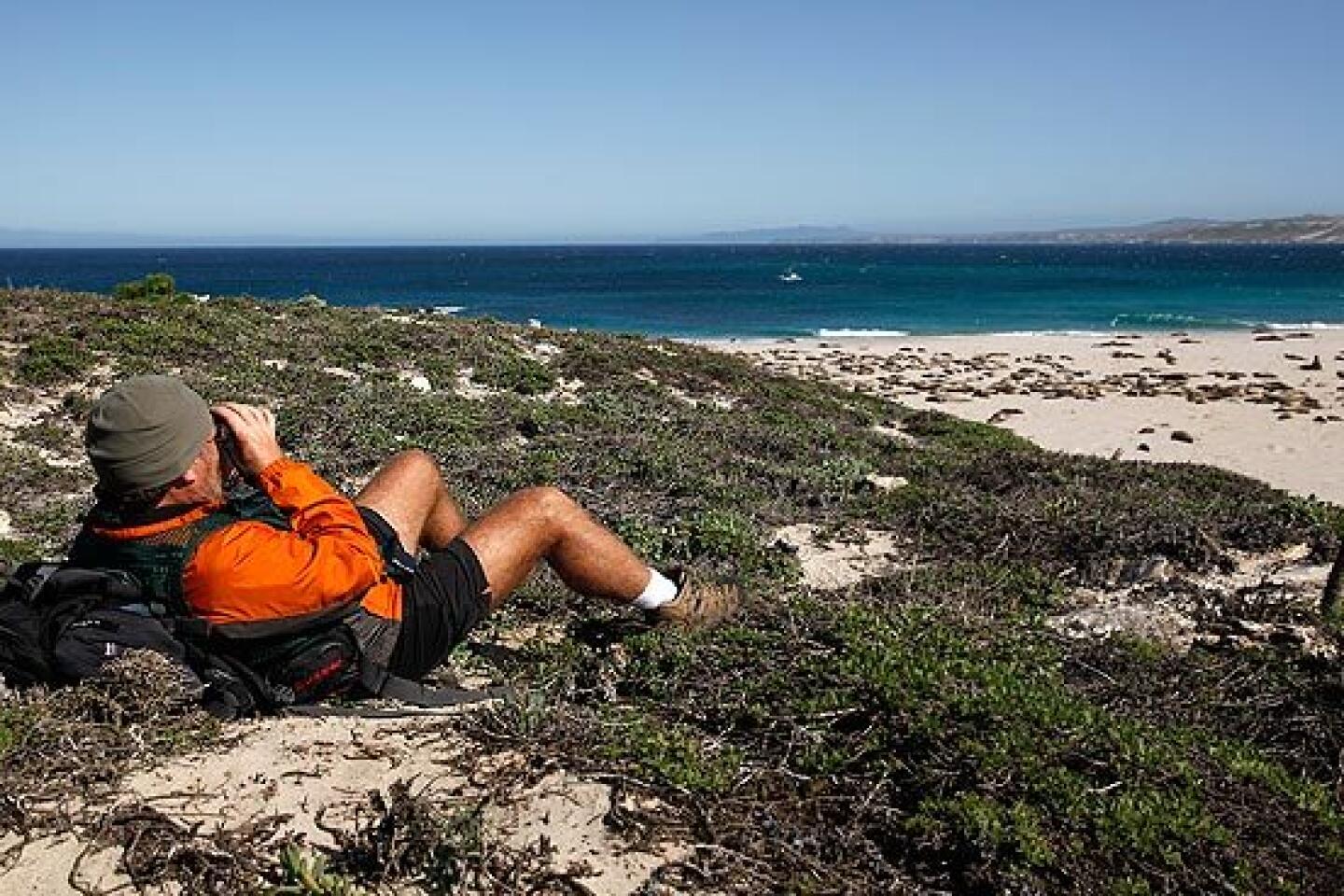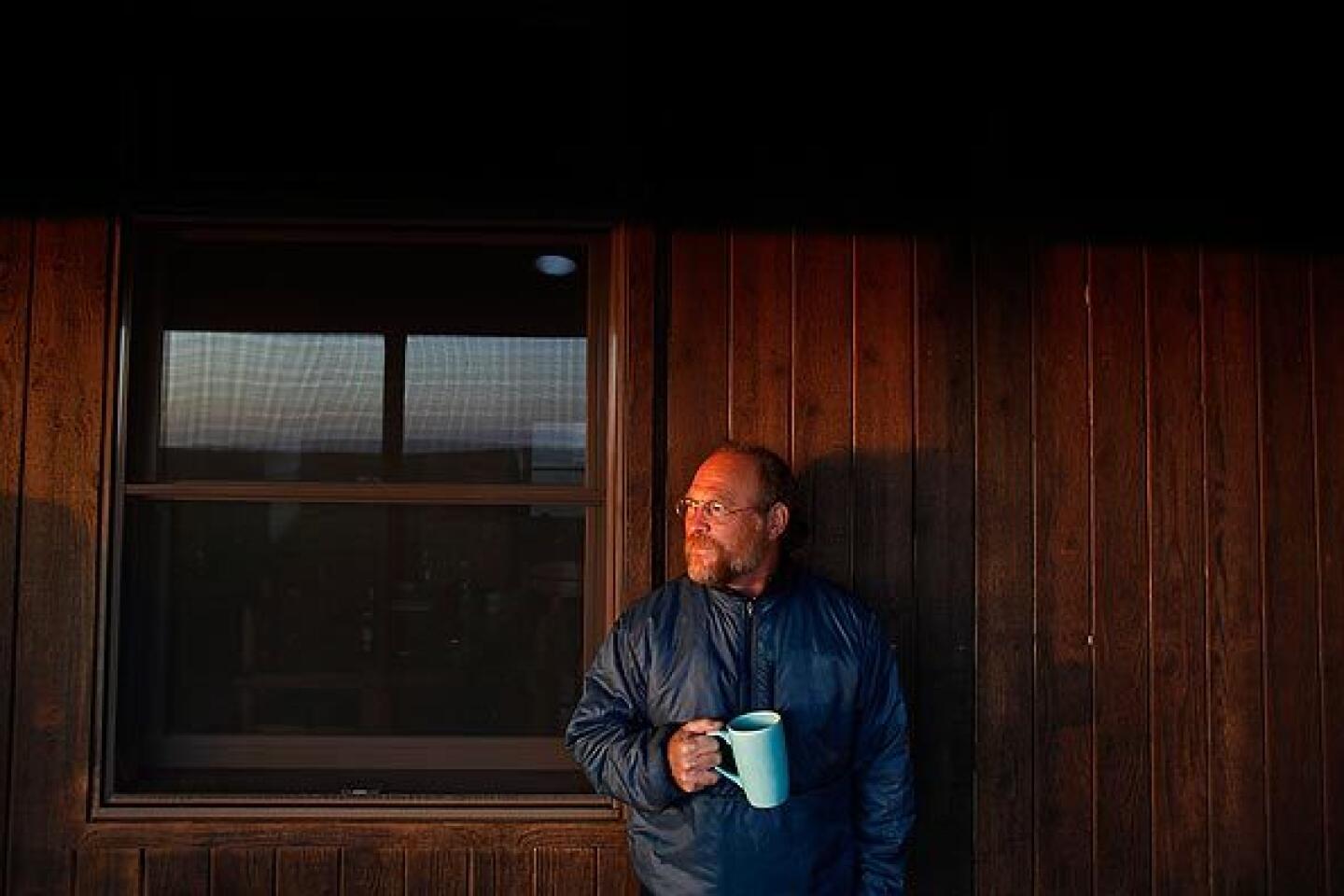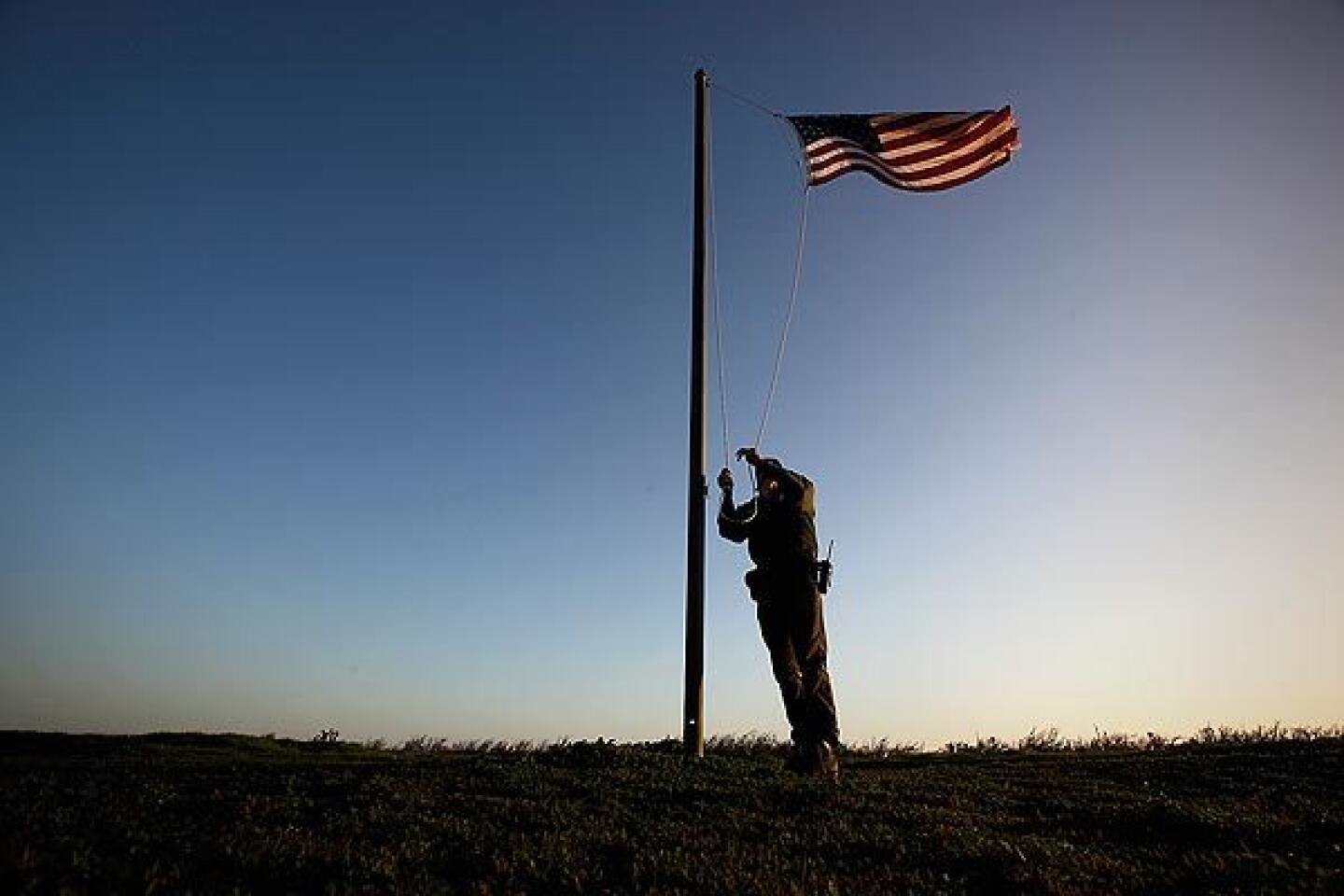The secret life of seals
- Share via
Reporting from San Miguel Island — The marine biologist picks his way down a mud ravine into the belching, bellowing madness of Cardwell Point.
All eyes are upon him, this short ruddy creature with an orange jacket, red beard and sturdy legs that seem to glide effortlessly across the sand.
Brent Stewart has studied elephant seals for 31 years and knows they are watching him. He scans the wind-scoured sand spit for rogue bulls -- bilious giants of blubber, muscle, whisker and teeth. They come here from the deepest, coldest reaches of the North Pacific to mate, and they don’t like interlopers.
Stewart has witnessed epic battles among them, pendulous snouts flailing like medieval maces, chunks of bloody flesh flung into the air, deep thwacks piercing the endless din of the wind. There is no way not to ponder the fragility of the human spine in such moments.
He walks warily into the fray this February afternoon, hundreds deep, keeping an eye open for escape routes.
“They’re quiet and sneaky,” he says. “When their eyes get all scrunched up, that’s when you want to run.”
As a senior scientist for Hubbs-Sea World Research Institute, Stewart has studied all types of sea life, in the waters off Antarctica, Greenland, Russia, the uninhabited outer Hawaiian Islands, the Maldive Islands in the Indian Ocean, Alaska, Iceland, Mexico.
After all that, he still marvels at what he sees every winter so close to home.
“How many people do we have now?” in Southern California, he says. “Twenty million. Just offshore, we have the most diverse area of seabirds and sea mammals anywhere in the world.”
Late January and February is the time to behold it, when the elephant seals haul up and fill the beaches, after the longest migration of any mammal on Earth.
Year after year, Stewart takes in the spectacle mostly alone.
San Miguel Island, the westernmost of the Channel Islands, 25 miles off the Santa Barbara coast, is raw. No one lives here permanently and few people visit. Ocean swells blast the jagged shoreline, making it impossible to land a boat most of the year. The relentless wind drives sand and grit over the 15-square-mile hump of land, raking scars through the scrub and stunting the indigenous shrubs.
Stewart, 55, figures he has spent eight or nine years of his life out here.
When he started in 1979, northern elephant seals were a mystery -- otherworldly pinnipeds larger than walruses. In the early 20th century, scientists had thought they were gone, hunted out of existence for their blubber. By the time Stewart came on the scene, they were rebounding, colonizing beaches for several months a year on San Miguel, San Nicholas Island 70 miles south and remote stretches of the Central Coast.
No one knew where they went for the other nine or so months. The assumption was that they were feeding just off the coast.
Stewart and Robert De Long, a marine biologist with the National Oceanic and Atmospheric Administration, began to attach depth and light sensors to the animals in the late 1980s to see what they were up to.
Of the first eight depth sensors they recovered, four had been flooded out. The underwater pressure had blown out the rubber gaskets.
What they learned over the ensuing years was astonishing: When the seals left the Channel Islands, they headed far into the northern Pacific, hunting alone. They dived for 20 minutes at a time or more -- sometimes for more than two hours and up to 5,000 feet down. The only other mammals known to reach such depths were beaked whales.
The seals would surface for about three minutes to breathe and then go back down, repeating the cycle for months on end before returning to California in winter to breed and in summer to molt. In one year, they might spend a full nine months at sea, travel 13,000 miles and spend 80% of the time underwater.
Their large brown eyes can gather the dimmest rays of light, particularly the short blue wavelengths found in the depths.
“They live in a world we have little reference to,” Stewart says. “They live at 1,500 feet or deeper, under tremendous pressure, without breathing, for most of their lives.”
The discoveries made it all the more surreal when Stewart interacted with one of them on the beach, each studying the other -- the man who drives up from Del Mar, stops at the Apple Pan in Westwood for an egg salad sandwich on rye and catches a twin-prop plane from Camarillo; the animal who hunts squid for months in a void so dark and cold it could be mistaken for space.
How do they even find their way here? the man wonders. Do they navigate by the stars?
At Cardwell Point, Stewart trudges across the triangular beach toward the sand spit, where waves bending around both sides of the island collide in fantails of white water. The channel beyond is a pinwheel of cobalt blue and turquoise.
The shoreline is so clotted with seals there is nowhere to walk. Many have gashes from fights or deep cylindrical scars where cookiecutter sharks have taken bites.
A bull raises his head and bellows at Stewart.
“You wonder what they see you as. They’re looking up into your eyes. They’re sniffing. Who knows what they think.”
Down the beach, another bull lurches up in a fury and lets out a strangely metallic pulsation, like pounding a tin drum.
“That’s a clap threat,” Stewart says. “It’s a warning to another bull to stay away.”
The clap joins the cacophony on the beach -- squealing, grunting, hissing, barking, belching and sighing. The rookery sounds like an insane asylum.
The weaned pups lie near the bluffs. Just a month old, the healthy ones are already 300 pounds.
They will remain on land until all the adults are gone sometime this month and then set into the rough sea on their own -- with no training, no guidance, just whatever impulse they carry within.
Stewart tags a sleeping pup, which wakes up with a shriek and a glare. The yellow tag -- number 2586 -- pierces the skin of the animal’s flipper. Stewart tags a couple of thousand pups every year, with a permit from the National Oceanic and Atmospheric Administration.
To his enduring surprise, the population keeps growing.
At the animal’s nadir in the 19th century, there were fewer than 100 seals, all on Guadalupe Island off Baja California.
They began repopulating California’s Channel Islands in the 1950s and on the mainland in the 1960s.
By 1983, Stewart figured they would hit their peak within 10 years, as food sources and safe beaches for mating reached capacity.
With an estimated 200,000 northern elephant seals today, he is still waiting for that point.
“It’s just astounding. They keep coming out of nowhere, more and more every year,” he says. “We can’t find the fish, but they can. The elephant seals evidently are using a part of the ocean we haven’t got to yet.”
Stewart walks the three miles back to the bunkhouse at the National Park Service ranger station. At night, he gazes up at Orion and the universe he rarely sees at home.
In the cold morning, he steps out after a cup of coffee, hikes to a bluff covered in a strange dwarf forest of coreopsis and threads down a steep canyon to Cuyler Harbor 400 feet below.
This is the most sheltered water on the island. Today it is awash in roiling currents and 10-foot surf.
The sand is vanishing fast, exposing the buried wood-plank bow of an old shipwreck. The tide is high and the elephant seals are in an uproar. The pups can’t swim yet, and if the beach disappears they will all die.
The seals climb higher into the dunes, agitated and roaring, a briny steam rising off them in the cold.
“I’m not going to tag down here today,” Stewart says. “There’s too much commotion.”
A bull comes out of the surf, harrumphing up like a monster inch-worm.
A bigger bull rises from the group to confront him.
They wobble up to each other, puffing their chests out. The big one weighs as much as a Lincoln Continental, the smaller one more like a Plymouth Voyager.
Stewart stops to watch. The Lincoln swings his snout at the other’s chest.
The Plymouth absorbs the blow and ratchets up for his shot. They seem to take turns, like gentlemen.
“Can you imagine what that would do to our little bodies?” Stewart asks.
The scent from a dead gray whale up the beach wafts down.
The blows ring out.
The upstart eventually retreats and swims off in the cold waves.
The surf thunders down, the sand keens in the wind, the babies cry, and another day comes and goes on San Miguel Island.
More to Read
Sign up for Essential California
The most important California stories and recommendations in your inbox every morning.
You may occasionally receive promotional content from the Los Angeles Times.
